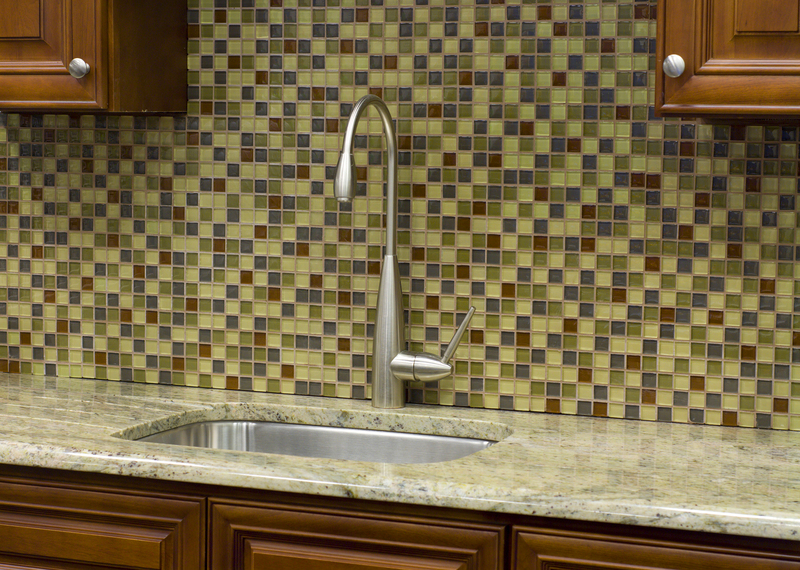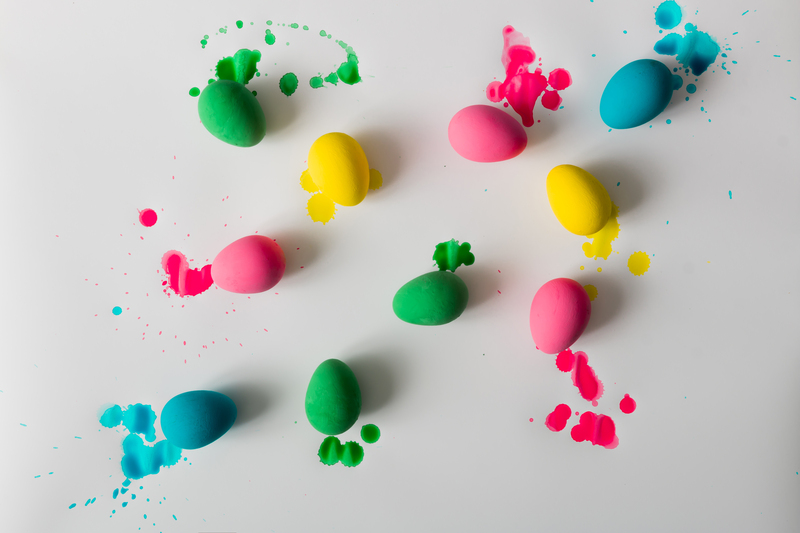From Stubborn to Spotless: Clean Burnt-on Residue Like a Pro
Posted on 24/06/2025
Burnt-on residue on cookware and kitchen surfaces can turn delicious meals into frustrating chores. If you've ever struggled to remove blackened, crusty remains from a favorite pan or sparkling stovetop, you know it's one of the most stubborn cleaning battles. But it doesn't have to be that way. This comprehensive guide reveals professional tips, effective cleaning methods, and easy-to-follow steps to help you clean burnt-on residue like a seasoned pro. Whether you're a home cook or a cleaning enthusiast, these strategies will ensure your cookware and kitchen surfaces go from stubbornly stained to spotlessly clean.
Understanding Burnt-On Residue: What Makes It So Tough?
Before we jump into solutions, it's important to understand what burnt-on residue is and why it clings so fiercely to your cookware and kitchen surfaces. When food cooks at high temperatures, sugars and proteins undergo a process called the Maillard reaction, leading to browning and, if overheated, burning. The resulting carbonized residue forms a hard, sticky layer that adheres tightly, sometimes even bonding chemically with the cooking surface--especially on stainless steel, cast iron, and non-stick pans.
Common Causes of Burnt-On Stains
- Cooking with high heat or leaving food unattended
- Using insufficient oil or water during cooking
- Sugar-rich foods and sauces that caramelize quickly
- Recurring spills on oven and stovetop surfaces
- Improper cleaning or neglecting stains after cooking
The key to spotless cookware and surfaces is knowing the right tools, techniques, and preventative steps. Ready to master the art of cleaning burnt-on residue? Let's get started!

The Must-Have Cleaning Arsenal: Tools and Ingredients
Equipping yourself with the right cleaning tools and supplies guarantees better, faster results. Here's what every professional (and home cook) should keep on hand:
- Baking soda - Natural abrasive for scrubbing and deodorizing
- White vinegar - Cuts grease and loosens burnt-on grime
- Lemon juice - Added cleaning power and pleasant scent
- Dish soap - Breaks down grease and food particles
- Non-abrasive scrubbers and sponges
- Stainless steel scrubbers (use with caution)
- Plastic or silicone spatulas
- Magic erasers (for oven doors and glass surfaces)
- Microfiber cloths
- Boiling water and a kettle for heat-based cleaning methods
Specialty Cleaners: When DIY Isn't Enough
- Commercial degreasers and oven cleaners
- Ceramic and glass stove cleaners
- Bar Keepers Friend or similar powder cleansers
Always read manufacturer instructions before using specialty products, especially on delicate surfaces.
How to Clean Burnt-On Residue: Step-by-Step for Every Surface
The ideal method depends on what you need to clean: pots, pans, baking sheets, stovetops, ovens, or glass surfaces. Here's how to tackle even the toughest burnt-on stains, like a pro.
1. Stainless Steel Pots and Pans
- Fill with Water and Boil: Add a few inches of water to the pan and bring it to a rolling boil. For extra effectiveness, add a few tablespoons of vinegar.
- Scrape Gently: Use a wooden or silicone spatula to loosen as much residue as possible while the pan is hot.
- Let Cool and Add Baking Soda: Drain the water, cover the stains with a thick layer of baking soda, and add just enough water to form a paste.
- Scrub: Let the paste sit for 15-30 minutes, then scrub gently with a non-abrasive sponge.
- Rinse and Repeat if Needed: For persistent spots, repeat the process or use a specialty powder like Bar Keepers Friend.
2. Non-Stick Cookware
- Avoid abrasive scrubbers that can damage the non-stick coating.
- Fill the pan with hot water and a squirt of dish soap, let soak for at least half an hour.
- Use a soft sponge or brush to lift off softened residue.
- For sticky patches, a paste of baking soda and water (left for a few minutes) works wonders.
3. Cast Iron Skillets
- Never soak for long periods to avoid rusting.
- Scrape burnt bits with a plastic scraper while the pan is still warm.
- For stubborn residue: Add some coarse salt, a splash of oil, and scrub with a paper towel or cloth.
- Rinse, dry thoroughly, and reseason if needed.
4. Baking Sheets and Trays
- Spread a layer of baking soda, spritz with vinegar. Let it fizz for 15-20 minutes.
- Scrub with a sponge or brush; use a little water to help it along.
- Rinse and repeat for especially tough, burnt-on patches.
5. Stovetops and Ovens
- Stovetops: Sprinkle baking soda over burnt spots; drizzle with vinegar. Allow to bubble, then scrub with a non-abrasive pad.
- Oven Interiors: Make a paste of baking soda and water; spread on burnt-on residue and let it sit overnight.
- Next day, wipe with a damp cloth. For stubborn spots, spritz with vinegar and scrub.
- Clean glass oven doors with a magic eraser or vinegar-soaked rag.
6. Glass and Ceramic Surfaces
- Sprinkle baking soda on the surface, then spray with white vinegar.
- Wait until the fizzing stops, then wipe with a soft cloth or paper towel.
- Use specialty glass cooktop cleaners for a streak-free, shiny result.
Pro Tips: How to Remove Burnt-On Grease Without Damaging Your Cookware
- Always start with gentler methods. Escalate to abrasives or strong chemicals only if needed.
- Test on small areas first, especially when using new cleaning agents.
- Rinse thoroughly after cleaning to remove all residues and avoid flavor transfer in future cooking.
- Season or oil cast iron and carbon steel pans after cleaning to protect from rust.
- Never use steel wool on non-stick or coated surfaces--this can permanently scratch and damage your cookware.
- Protect your hands with gloves when using strong chemicals or prolonged scrubbing.
Preventing Burnt-On Residue: Easy Habits for Spotless Kitchenware
Prevention is the easiest path to spotless cookware and shining kitchen surfaces. Adopting these simple habits saves you time and effort, keeping your cookware in like-new condition with minimal fuss.
- Use appropriate heat settings. Don't crank up the heat unless you need a strong sear.
- Stir foods frequently to prevent sticking and burning, especially when cooking sugar-based sauces.
- Always use enough oil, butter, or liquid to provide a barrier and distribute heat evenly.
- Clean spills and stains as soon as possible - the longer they sit, the harder they become to remove.
- Regularly maintain your cookware as recommended by the manufacturer.
When to Call In the Pros: Deep Cleaning and Restoration
Sometimes, home methods might not be enough, especially if residue is badly burned or has been left for a long time. Consider professional cleaning or restoration if you have:
- Heavily scorched stainless steel with blue or rainbow discoloration
- Warped or pitted pans threatening food safety
- Commercial-grade equipment with built-up carbon deposits
- Delicate antique or specialty cookware
Professional cleaning services use industrial-strength equipment and chemicals that cut through virtually any burnt-on residue, restoring cookware to its best possible state.
Natural vs. Chemical Cleaners: What Should You Use?
Natural Cleaning Solutions
- Baking soda and vinegar: Non-toxic, affordable, effective on most residues.
- Lemon juice: Great for stains and odors; safe for most surfaces.
- Salt: Acts as a gentle abrasive for scrubbing.
When to Use Chemical Cleaners
- Oven cleaners and degreasers: Best for severe, long-standing burnt stains.
- Powdered cleansers: Use for stainless steel, glass, and enamel (test first).
- Commercial cooktop creams: Designed for delicate surfaces like induction tops and ceramic ranges.
Always read product labels, and make sure your cookware or appliance is compatible with the cleaning product.

Frequently Asked Questions about Cleaning Burnt-On Residue
Can I use steel wool on burnt-on residues?
Steel wool is incredibly effective for hardcore stuck-on food and burnt stains on stainless steel or cast iron. But never use it on non-stick, ceramic, or enameled surfaces, as it can scratch and ruin them.
How can I remove burnt-on residue from a glass cooktop without scratching it?
Glass cooktops require delicate care. Use baking soda and vinegar, a non-abrasive scrub pad, and specialty glass cooktop cleaners. Avoid metal tools or abrasive pads.
Is it safe to use oven cleaner on pots and pans?
Generally, oven cleaner is too harsh for most cookware--especially aluminum, non-stick, or coated surfaces. Stick to solutions recommended by the manufacturer or turn to gentler, homemade cleaning methods.
Does soaking really help with burnt-on stains?
Absolutely! Soaking loosens the carbonized food particles, making them much easier to remove, and is the safest first step before more vigorous scrubbing.
Conclusion: Bring Stubborn Stains Back to Spotless With Pro Know-How
Learning how to clean burnt-on residue is an invaluable skill for any kitchen warrior. With the tips, DIY tricks, and effective products featured in this guide, you can restore your cookware and kitchen surfaces to their former glory, save money, and improve the taste and safety of your meals. Remember: patience, persistence, and using the right cleaning technique for your specific mess are the secrets to going from stubborn to spotless.
- Stock up on essential cleaning tools
- Follow the right steps for your cookware type
- Never let burnt-on food linger
- Prevent residue with smart cooking habits
With these insights and practical techniques, you'll never dread burnt-on residue again. Happy cleaning--and enjoy that beautiful, gleaming finish!



